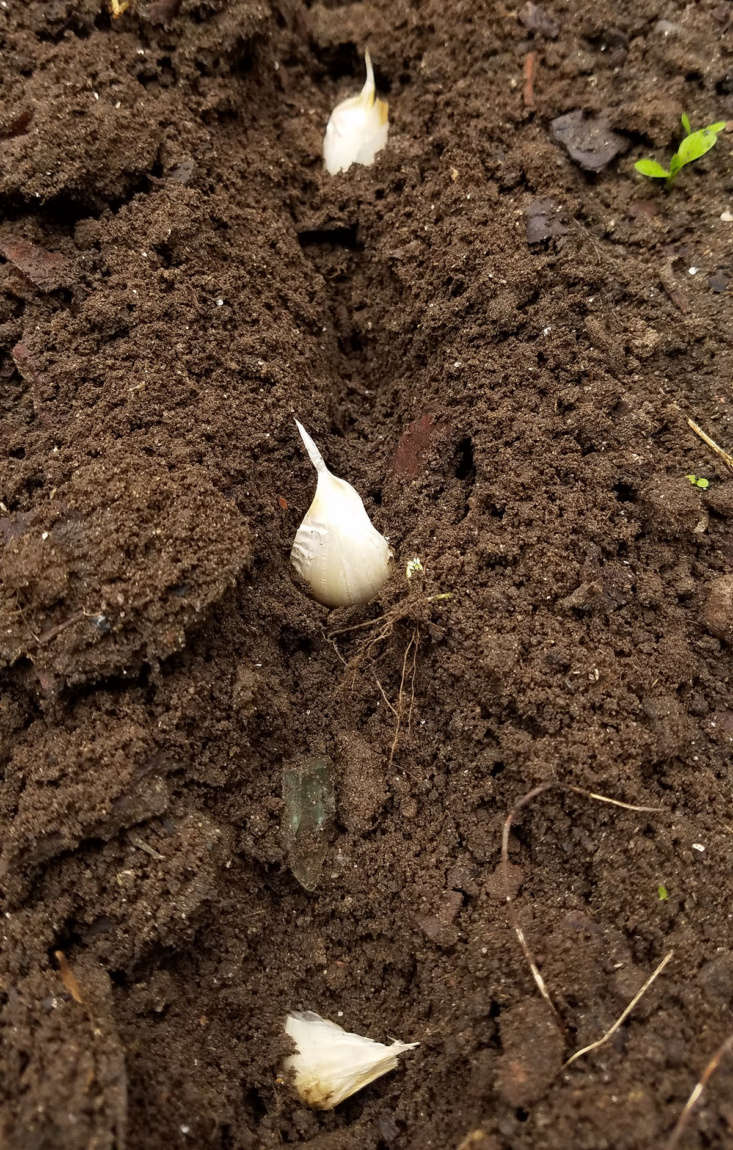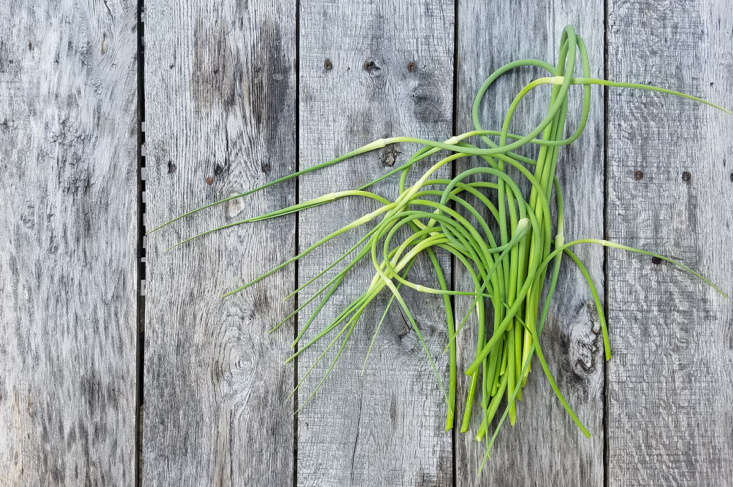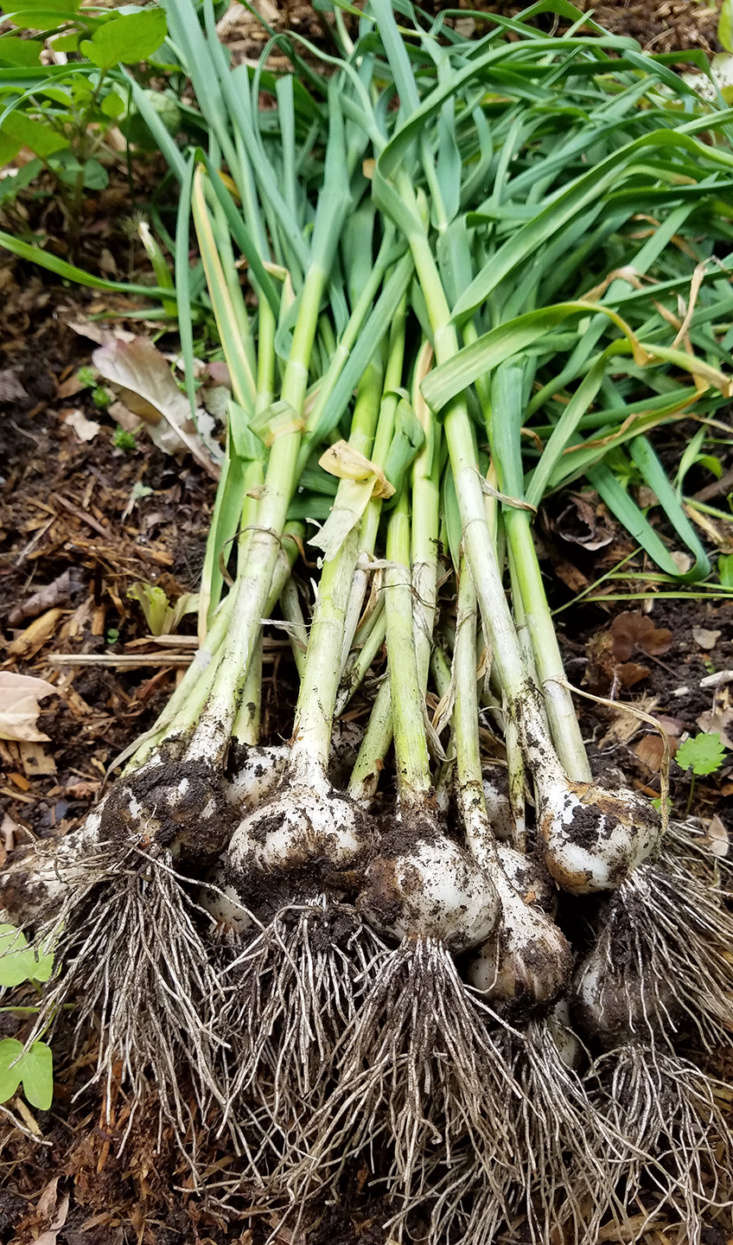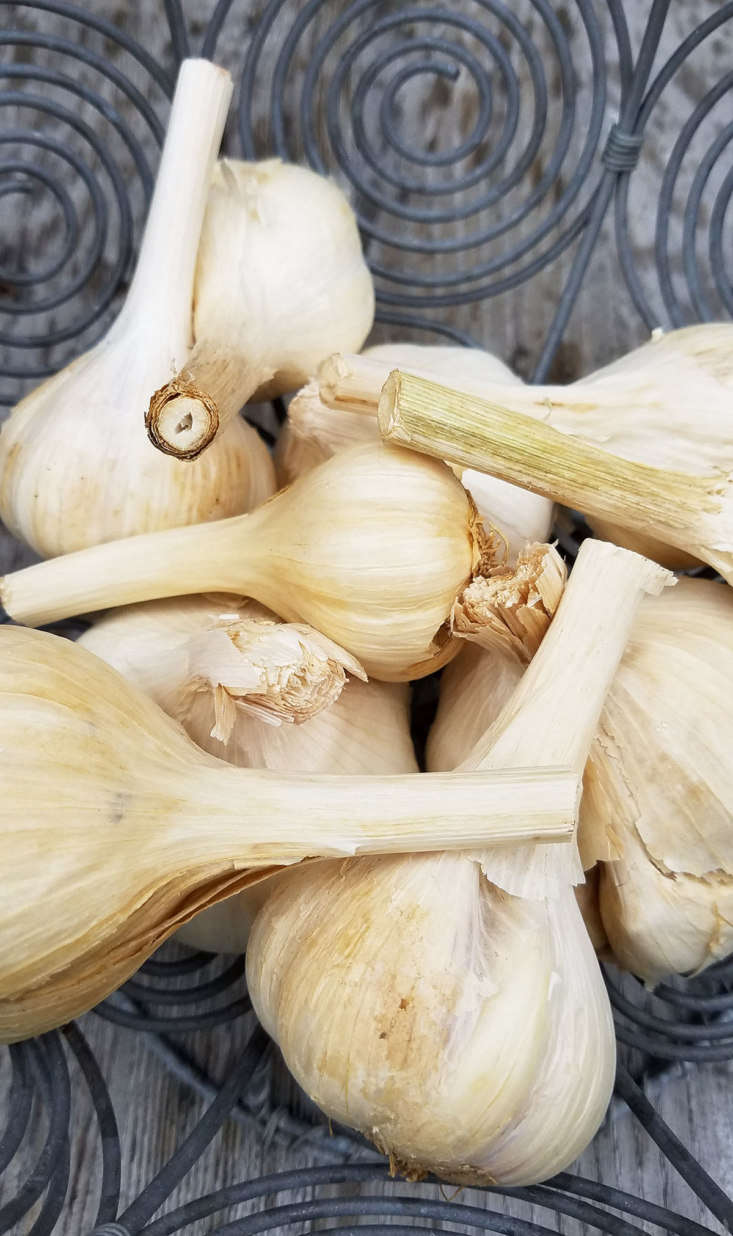Garlic, Allium sativum
Pungent garlic is one of the most satisfying crops to grow. From a single clove planted the previous autumn comes a full, fat head of aromatically fresh summer garlic, quite different from the papery clusters you can buy day in, day out, at any supermarket. The flavor of the new garlic is also a revelation: milder, but fruitier and more complex than the hot, acidic punch of long-stored and much-traveled store-bought bulbs.
Right now in Brooklyn, where I live, my home-grown garlic is sending up lush leaves, as the fava beans begin to flower. Soon, I will pull some green garlic for rubbing on bruschetta or grilling whole.
Read on to learn how to grow garlic at home.
Photography Marie Viljoen.

I have planted everything from Brooklyn bodega garlic, to organic farmers’ market bulbs, to heirloom cultivars purchased online from a good grower.

Even irradiated Chinese bulbs seem to sprout. Store-bought heads are usually softneck garlic, which means that they have no hard stalks (the remnant of the scape) in the middle of the little fist of cloves. A benefit of softneck garlic is that it keeps longer than hardneck varieties.

Whatever garlic you choose, be ready to plant in early fall. You can plant later in fall and right up to winter, but the plants may not have time to set roots before the big freeze, resulting in small heads. You can also plant garlic in early spring, but it will be ready to harvest later, and again, the bulbs will be smaller; a winter underground gives the roots a chance to grow. For an extended harvest of fresh garlic, plant in both seasons.


I sometimes sow cold season peas or fava beans between my garlic rows, which allows me to make the most of my modest space while fixing nitrogen in the soil via the legumes. Apply a layer of mulch (preferably compost or shredded leaves) to help keep the soil at a more even temperature.





By late spring your plants are ready to harvest as green garlic—a spring delicacy. The cloves within the head of garlic are very soft. They are now sweetly strong.



If you are using your crop immediately, wash the heads of garlic, otherwise leave the soil on while they cure.

Store them somewhere dry and well aerated, out of the sun.

Keep It Alive
- Grow garlic in full sun.
- The cloves can be planted in ample containers or in-ground.
- Make sure the soil drains well; clay won’t do.
- For pots, choose containers 12 inches deep or more and use a light potting mix or compost.
- Garlic hates to have wet feet.
- Plant garlic in early to mid fall to give its roots time to develop before a freeze.
- Fertilize garlic with fish or seaweed emulsion
- For best results, plant garlic bulbs from a reputable grower.
Seed Savers sells a smorgasbord of heirloom and organic garlic varieties.
Cheat Sheet
- Garlic can be planted in early spring but will yield a smaller harvest.
- If you live in a warm climate, chill garlic for three weeks prior to planting.
- Green garlic is immature garlic, while garlic scapes are the flowering stem.
- Don’t store harvested garlic in the refrigerator (it will sprout).
See more growing tips in Garlic: A Field Guide to Planting, Care & Design. Design your summer vegetable and fruit garden with our curated guide to Edible Gardens 101. Read more:
- Everything You Need to Know About Herb Gardens
- DIY: Alliums, Three Ways
- Everything You Need to Know About Tomatoes














Have a Question or Comment About This Post?
Join the conversation (0)